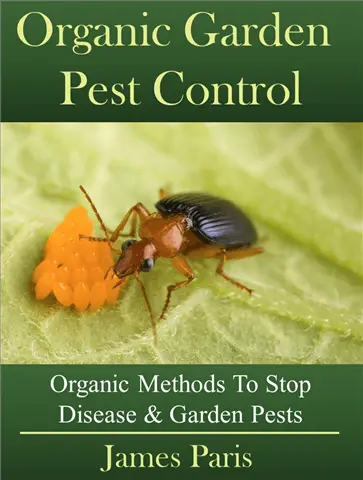Brassicas such as cabbage, broccoli, brussels sprouts, and cauliflower are included in vegetable growing efforts of many gardeners. Indeed many vegetable gardens would seem a little ‘bare’ if they were not included somewhere amongst the Raised Beds or rows.
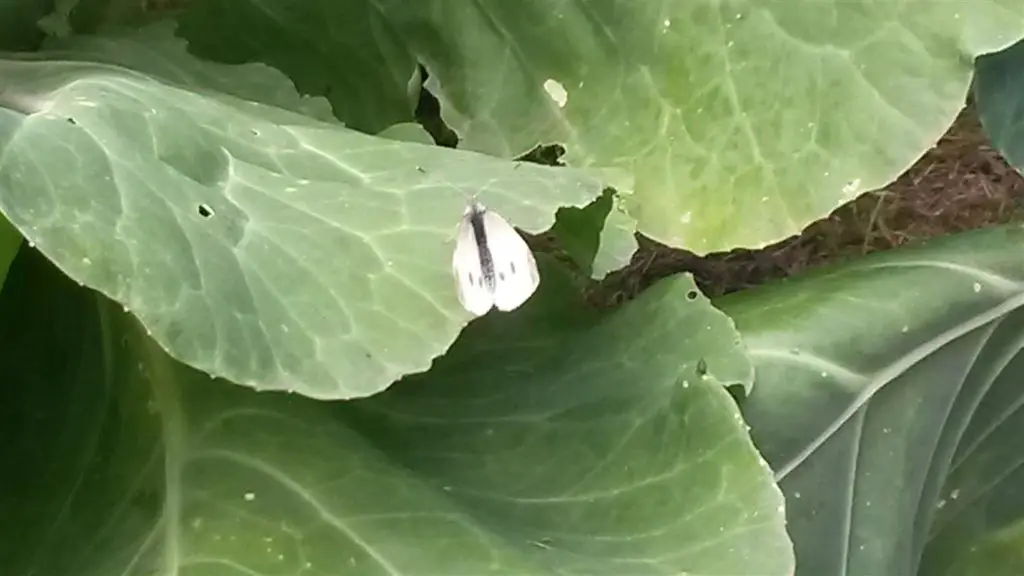
However there is one BIG problem if you are growing brassicas like these in cooler climate countries – the dreaded cabbage caterpillar.
This is in fact the larvae of the Cabbage White butterfly otherwise known as the ‘cabbage moth’ or ‘cabbage worm’, and the caterpillar can cause massive destruction to any brassicas such as these listed above, and indeed many other vegetables.
The caterpillars are voracious feeders and will reduce a healthy cabbage to virtually nothing in a matter of days. Worse still, what it does not consume, it pollutes with its faeces – which looks particularly disgusting on your lovely white cauliflowers!
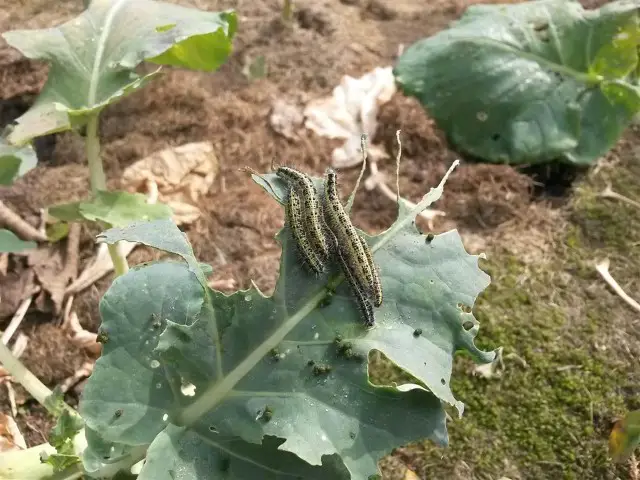
There are 6 main ways to keep the cabbage white away from your cabbages and save your precious veggies from destruction.
- Butterfly netting. Protect your brassicas with a butterfly netting, completely denying access to the butterfly which seeks to lay its eggs on your plants.
- Fleece cover. Gardeners fleece provides 100% cover and protection against many destructive pests – and destructive weather patterns.
- Chemical spray: Spray your veggies with chemical insecticides
- Organic spray: Spray with organic repellents to keep away the butterfly
- Companion planting: Grow other plants alongside your cabbages & other brassicas to disguise, repel, or hide them from the butterfly
- Manual removal: Remove the eggs or the caterpillars by hand as they appear on your plants
Butterfly netting solution
The most effective and organic way to save the cabbages from the butterfly is without doubt the butterfly netting.
By simply throwing some netting over your cabbages you are denying access to the butterfly which has to physically land on the cabbage leaf to lay its eggs.
If you are using the Raised Bed system this is even easier (and more effective) as you will see by the picture.
Put a simple hoop frame in place attached to your raised bed frame and put the netting over it. This method makes sure that the netting is well clear of the cabbage leaf, which is imperative in order to stop the butterfly just landing on the net and laying on the leaf that is pressed up against it.
Many times I have witnessed gardeners just throwing the net over the cabbage and expecting that to stop the butterfly – Don’t do this! If the netting is laying on a leaf, then the butterfly can still lay its eggs and your cabbage is on the menu once more!
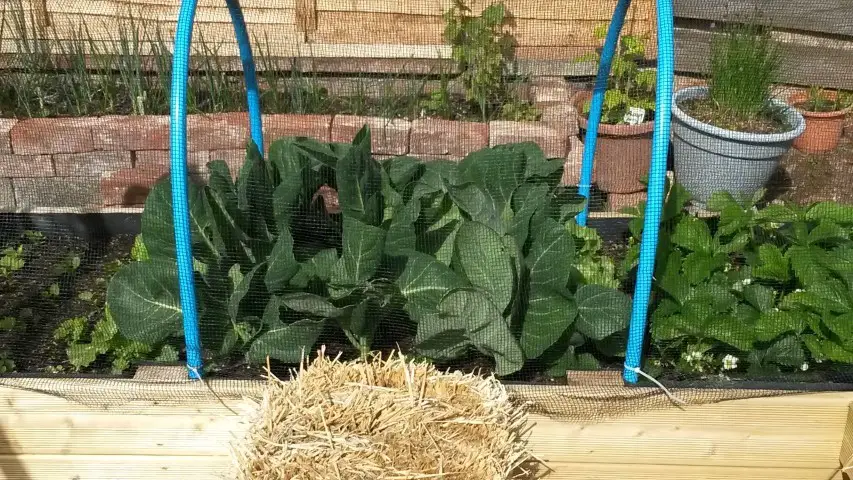
Fleece netting solution
This is just as effective as the butterfly netting – perhaps even more so. It has no holes for the butterfly to gain access so even if the fleece is up against the plants it is still effective against the butterfly.
The fleece has the added advantage in that it will protect the cabbage from early frost or damaging winds.
It also helps to retain moisture and heat, thereby encouraging growth.
It is for all these reasons that you will often see commercial growers covering hundreds of acres of fields with this garden fleece which is cheap and simple to apply.
Chemical spray solution for butterflies
There are many chemical sprays available to deal with the butterfly pest, but they are my least favourite as personally I do not like the idea of spraying my food with chemicals!
However if that is ok with you then check out your local supplier for pesticides. Keep in mind that most pesticides will only kill the caterpillar or cabbage worm itself and not the eggs.
Organic spray solutions
Rather than use chemicals there are many hand made organic sprays that can be used against the butterfly. These tend towards disguising the smell of the brassicas which attract the butterfly.
Hand Sprays made from garlic, onions, hot chilli peppers or hand soap can all be used to distract or disrupt the cabbage moth
Companion planting: Growing other plants like aromatic herbs, thyme, dill, oregano, lavender, onions, garlic, and marigolds all help to keep the butterfly at bay and is just a small part of the Companion Planting method for growing healthy veggies.
Plants like the Nasturtium can also be grown alongside your brassicas to act as a ‘sacrificial’ plant. The idea behind this is that butterflies will choose the Nasturtium over your cabbages!
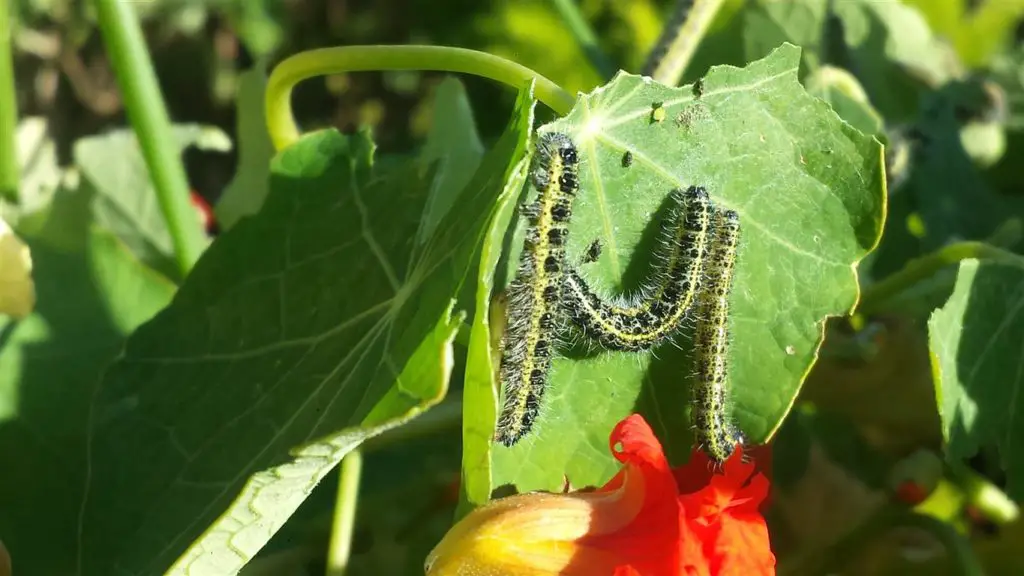
Manual removal of caterpillars
This is of course a highly effective way to get rid of this pest, however it is a bit messy and depends very much on you being able to find all the critters!
The tiny caterpillar when first hatched really gets into the ‘nooks & crannies’ of the cauliflowers or broccoli plants especially, making it sometimes impossible to get rid of them all.
I know this from experience – there is nothing more off-putting than to lay your harvested broccoli down on the kitchen sink and watch caterpillars crawling out of your next meal.
Worse still – observe them floating around the edges of the soup bowl.
What do the cabbage white eggs look like?
The butterfly lays eggs in batches of 20 or so, which can result in clusters of over 150 orange/yellow eggs per cluster – as you may see in the following picture…
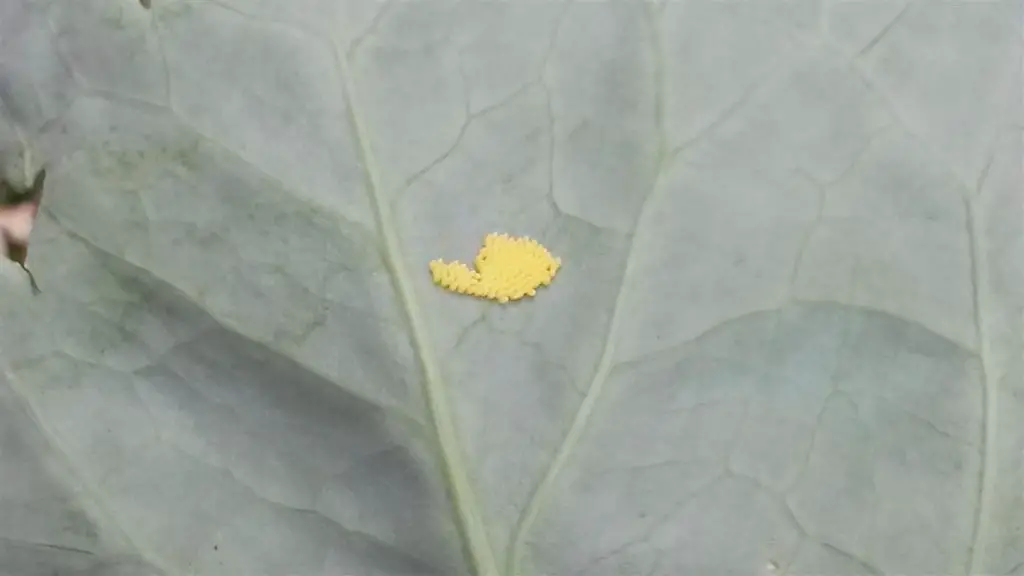
The cabbage white butterfly (often called cabbage ‘moth’) is a small white butterfly with a cluster of 2 black spots on each wing when open and charcoal grey wing tips.
It lays its eggs on the underside of cabbage and other brassica leaves which hatch after just a few days when the caterpillar emerges in the first of 5 stages of moulting as it grows rapidly outgrowing its skin.
The resulting hatch can lead to devastation beginning at the hatch which is approximately 3-6 days after laying depending on the temperature and weather conditions.
The adult caterpillar can reach over 1 inch long and is dark green, hairy with yellow stripes.
The life span of the destructive caterpillar is around 20-30 days after which it will crawl away to develop into a pupa and finally hatch into an adult butterfly.
The whole process from egg to adult butterfly is around 45-55 days, when the whole cycle can begin again.
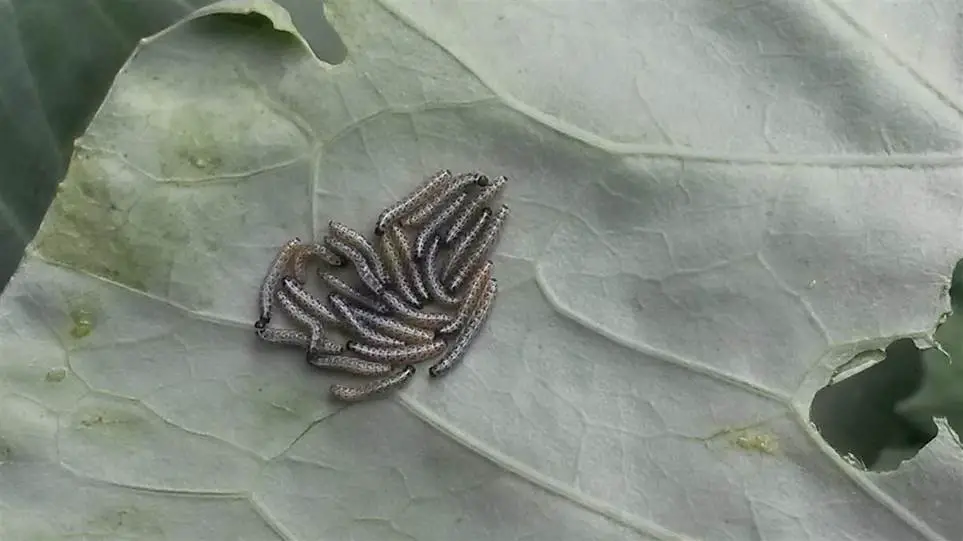
Conclusion:
There is no doubt that the cabbage moth or the Great white butterfly Pieris brassicae with which it is often confused, is a “real and present danger” for any vegetable gardener but particularly those trying to grow brassicas.
Their favourite plant seems to be the cauliflower, but any brassica will do just fine for them!
I’m a firm believer that fore-warned is fore-armed so with that in mind I would definitely be putting measures in place before I even planted the seedlings.
Definitely the method for the least hassle and best effectiveness for me, would be either the netting or the fleece option, but either way if you are growing cabbages you should get ready for butterfly warfare!


